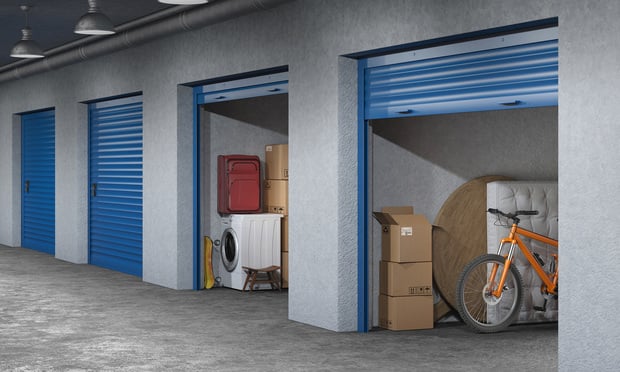
DALLAS—Dallas continues on its growth trajectory, with seemingly no end in sight. The main driver is the region's consistent job gains of more than 100,000 annually during the last few years. Since 2010, almost 700,000 jobs have been added to the region, an increase of approximately 25% in the job base.
Most importantly, these new jobs are occurring across all major industries, which is driving office demand broadly in the region, according to JLL's first quarter office report. In fact, since 2010, Dallas has absorbed 19 million square feet of class-A and -B space.
While construction has ramped up to meet demand, the region's consistently high vacancy rate has dropped precipitously in the last few years. From a high of 25% in 2009, it now stands at 17.7%–close to an all-time low, says the JLL report.
This tightness has pushed rental rates throughout the region, with almost all submarkets recording above-average increases. These increases are partly being driven by higher rates in new construction, which is helping drive rents in existing assets. This shift is important because the market has historically had fairly flat rent growth. In this last cycle, rents are consistently increasing; up 28% in the last four years.
“We're seeing rents in downtown Dallas going up over 10% year over year, and an almost 30% total increase in neighboring Uptown since 2011. As you look at a cross section of how we compare nationally and internationally, we are still very much an affordable city. It's testament to the strong fundamentals and diverse economy that continue to attract companies to our market,” Brooke Armstrong, senior vice president of JLL tells GlobeSt.com. “Tenants are positioning themselves in the right location with the right amenities in order to retain and recruit top talent for their respective companies, at a premium with rental rates reaching record highs of as much as $52 per square foot in Uptown.”
JLL reports the Uptown/Oak Lawn total inventory is 11.405 million square feet. Total net absorption is 586,698 square feet with 1.295 million square feet under construction, GlobeSt.com learns.
The near-term outlook is to continue on its same trajectory, with 2017 being a solid year, says JLL. Office absorption will continue to outpace its historic average by a wide margin and likely come in around the 5-million square foot mark. This is due to the delivery of the large build-to-suits and other new construction projects that have been underway the last couple of years. The report indicates that the beginning of these deliveries is what influenced the spike in the first quarter absorption.
In addition, rents should continue to rise in the coming year and annual rent growth will slow slightly this year, says JLL. Rates may enter into the 5 to 6% range from the current 7.5% rate, with some resistance at the top-end to advance rents. This will likely moderate some of the rate growth in select locations.
“Looking forward, as we see the typical waves of lease expirations slow in 2018, a pattern created by the boom of the 1980s, we can look back about 10 years ago to get an idea of what we may expect,” Armstrong tells GlobeSt.com. “There was too much uncertainty in the economy for companies to make long-term/10-year decisions which results in a gap in lease expirations. I don't expect us to see a big dip in rates like we did in the last cycle, so there's no reason to avoid making a decision now. That's not to say they we're encouraging clients to make these decisions now; the driver should be our client's business needs, not an attempt to 'time the market.'”

DALLAS—Dallas continues on its growth trajectory, with seemingly no end in sight. The main driver is the region's consistent job gains of more than 100,000 annually during the last few years. Since 2010, almost 700,000 jobs have been added to the region, an increase of approximately 25% in the job base.
Most importantly, these new jobs are occurring across all major industries, which is driving office demand broadly in the region, according to JLL's first quarter office report. In fact, since 2010, Dallas has absorbed 19 million square feet of class-A and -B space.
While construction has ramped up to meet demand, the region's consistently high vacancy rate has dropped precipitously in the last few years. From a high of 25% in 2009, it now stands at 17.7%–close to an all-time low, says the JLL report.
This tightness has pushed rental rates throughout the region, with almost all submarkets recording above-average increases. These increases are partly being driven by higher rates in new construction, which is helping drive rents in existing assets. This shift is important because the market has historically had fairly flat rent growth. In this last cycle, rents are consistently increasing; up 28% in the last four years.
“We're seeing rents in downtown Dallas going up over 10% year over year, and an almost 30% total increase in neighboring Uptown since 2011. As you look at a cross section of how we compare nationally and internationally, we are still very much an affordable city. It's testament to the strong fundamentals and diverse economy that continue to attract companies to our market,” Brooke Armstrong, senior vice president of JLL tells GlobeSt.com. “Tenants are positioning themselves in the right location with the right amenities in order to retain and recruit top talent for their respective companies, at a premium with rental rates reaching record highs of as much as $52 per square foot in Uptown.”
JLL reports the Uptown/Oak Lawn total inventory is 11.405 million square feet. Total net absorption is 586,698 square feet with 1.295 million square feet under construction, GlobeSt.com learns.
The near-term outlook is to continue on its same trajectory, with 2017 being a solid year, says JLL. Office absorption will continue to outpace its historic average by a wide margin and likely come in around the 5-million square foot mark. This is due to the delivery of the large build-to-suits and other new construction projects that have been underway the last couple of years. The report indicates that the beginning of these deliveries is what influenced the spike in the first quarter absorption.
In addition, rents should continue to rise in the coming year and annual rent growth will slow slightly this year, says JLL. Rates may enter into the 5 to 6% range from the current 7.5% rate, with some resistance at the top-end to advance rents. This will likely moderate some of the rate growth in select locations.
“Looking forward, as we see the typical waves of lease expirations slow in 2018, a pattern created by the boom of the 1980s, we can look back about 10 years ago to get an idea of what we may expect,” Armstrong tells GlobeSt.com. “There was too much uncertainty in the economy for companies to make long-term/10-year decisions which results in a gap in lease expirations. I don't expect us to see a big dip in rates like we did in the last cycle, so there's no reason to avoid making a decision now. That's not to say they we're encouraging clients to make these decisions now; the driver should be our client's business needs, not an attempt to 'time the market.'”
Want to continue reading?
Become a Free ALM Digital Reader.
Once you are an ALM Digital Member, you’ll receive:
- Breaking commercial real estate news and analysis, on-site and via our newsletters and custom alerts
- Educational webcasts, white papers, and ebooks from industry thought leaders
- Critical coverage of the property casualty insurance and financial advisory markets on our other ALM sites, PropertyCasualty360 and ThinkAdvisor
Already have an account? Sign In Now
*May exclude premium content© 2025 ALM Global, LLC, All Rights Reserved. Request academic re-use from www.copyright.com. All other uses, submit a request to [email protected]. For more information visit Asset & Logo Licensing.








